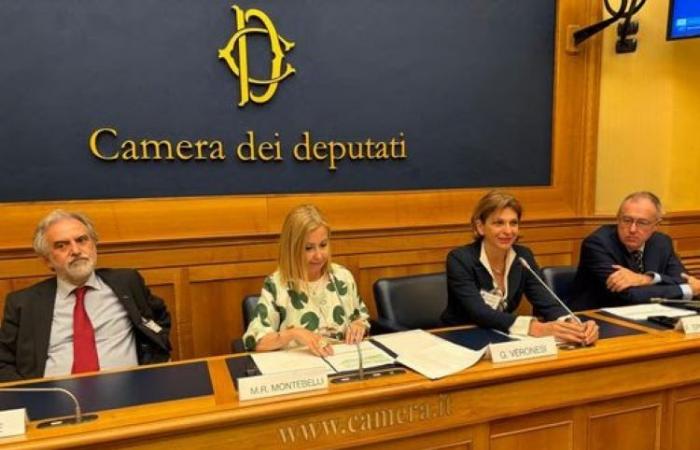With 34 thousand new deaths per year, the lung cancer represents the most frequent cause of oncological death in Italy. For those affected by this neoplasm, however, there is good news. In recent years, in fact, there have been important advances in surgery and pharmacological therapies, which have allowed, also thanks to primary prevention, primarily the fight against smoking, to significantly increase patients’ survival expectations.
The success of treatments, however, is linked to the early diagnosis. And it is for this reason that the implementation of a structured lung screening program must represent a priority within public health interventions and policies.
To contribute to an open debate on the topic, CREA Sanità has developed, with the contribution of Roche Italia, an innovative model which, for the first time, integrating and updating a previous study, also analyzes the impact of innovative drugs such as immunotherapy , recently introduced, and offers an economic evaluation of lung cancer screening, based on evidence of cost-effectiveness, cost-utility, financial impact (budget impact).
The results of the model estimate that the implementation of a national screening program in high-risk patients would allow, thanks to a timely diagnosis, an increase in the survival of screened patients by 7.63 years compared to unscreened patients, compared to a reduction in healthcare costs equal to 2.3 billion euros, over a 30-year time horizon.
In financial terms, an initial investment should be expected in the first year, also linked to the organization of screening, equal to approximately 80 million euros, which however would be more than compensated by the savings of approximately 180 million euros already in the first year.
The presentation of the results, which took place today in the Chamber of Deputies, was an opportunity to give life to a constructive debate involving clinical experts, economists and institutions, with the aim of stimulating a shared commitment to broaden access to screening to the lung in our country.
“The developed model,” he explained Federico Spandonaroassociate professor at the University of Rome ‘Tor Vergata’ and president of the CREA Sanità Scientific Committee – demonstrates that the promotion of screening of the high-risk population for lung cancer is an effective and efficient public health policy which, provided it is adequately promoted and incentivized, is also sustainable from a financial point of view.”
“In parallel with the fight against smoking – declared the professor Giulia Veronesi, director of the Robotic Thoracic Surgery Program at the Irccs San Raffaele hospital – it is a priority to promote access to screening for high-risk subjects, i.e. smokers or former heavy smokers over the age of 50. International scientific societies and the European Commission are already moving in this direction and recommend regular low-dose radiation intensity chest CT scans for these subjects for adequate monitoring.”
“When lung cancer is diagnosed and treated in an early stage with surgery and drugs – continued Veronesi – 5-year survival rates of around 80% can be achieved. For this reason, investing in a structured lung screening program is today more crucial than ever, because it allows a life gain of over 7 years with economic savings for the National Health System”.
“While it is now consolidated practice to provide evidence also in terms of the cost-effectiveness of therapies – commented the president Aiom, Francesco Perrone – there are still few data and analyzes of this type on screening. The model presented today on the lung is, therefore, very interesting and has the potential to be replicated and applied to other oncological screenings, providing a tool of great value to guide health policies.”
The Honorable Ugo Cappellaccipresident of the XII Social Affairs Commission of the Chamber of Deputies, recalled that “screenings allow us to anticipate the disease and its consequences. This is why it is essential to make up for the delays accumulated during the pandemic. One of the measures on which the Government and Parliament they are working on is the elimination of waiting lists, with an important provision in favor of citizens’ rights”.
“The mission – Cappellacci then specified – is also to expand the screening offer to priority areas such as lung cancer, thanks to the joint action launched at European level and which also sees Italy as a protagonist. Commission we have held a series of hearings on the European Plan against Cancer from which, once again, it emerges that using new resources for health should not be considered an expense, but the best investment and the best reform that can be implemented”.
“Thanks to significant investments in research – the words of Federico Pantellini, Medical Lead Roche Italia – we provide lung cancer patients with immunotherapy and molecularly targeted drugs capable of acting from the early stages of the disease, where the objective may be that of cure. In order to ensure the benefits associated with these treatments, it is a priority to make an early diagnosis and screening is a key tool.”
“In this perspective – concluded Pantellini – we renew our desire to be a valuable partner for the System, collaborating with all the actors in the field so that access to this precious public health strategy can be guaranteed. Today’s debate is part of the LungLive program, promoted by Roche to redefine lung cancer together, focusing on primary prevention, screening and therapeutic innovation from the early stages of the disease”.
The model presented provides a valuable tool, if we take into account the fact that, among all cancers, lung cancer is the one with the greatest impact on society: worldwide the burden reaches 4,000 billion dollars, while in Italy it is an annual cost of 2.5 billion euros has been estimated. And in a context of limited resources for public policies, the economic aspect cannot be neglected.
Assuming to carry out screening every two years on the high-risk population (represented by subjects aged between 50 and 79 years with heavy exposure to smoking – more than 30 pack-years), considering a time horizon of 30 years and finally adopting , a response rate of 30%, the developed model estimates that it will be necessary to carry out on average approximately 460,000 LD-CTs per year (approximately 360,000 when fully operational if smoking habits are not significantly changed).
The research work conducted focused on modeling the various possible alternative methods of carrying out screening and makes it possible to modify the invited and participating population, the frequency of repeat screening and the management options for cases in which the screening carried out does not allow for certain diagnosis.
In addition, particular attention was dedicated to the description of the therapeutic paths currently available, foreseeing the possibility of their updating over time.
The work was implemented with the support of a scientific board composed of Giulia Veronesi, professor at IRCCS San Raffaele hospital, Ferrara R., researcher, Department of Medical Oncology, Vita-Salute San Raffaele University, Graziano P., Director of the Pathology Unit , Research Institute ‘Casa Sollievo della Sofferenza’.






